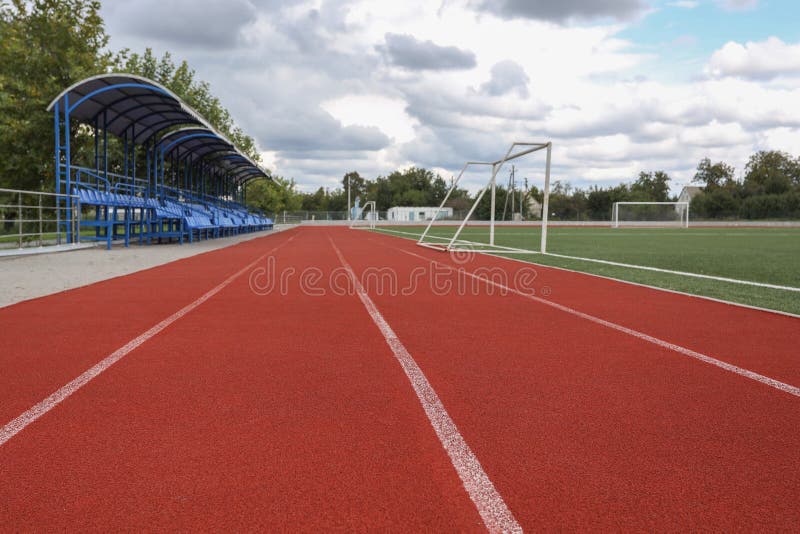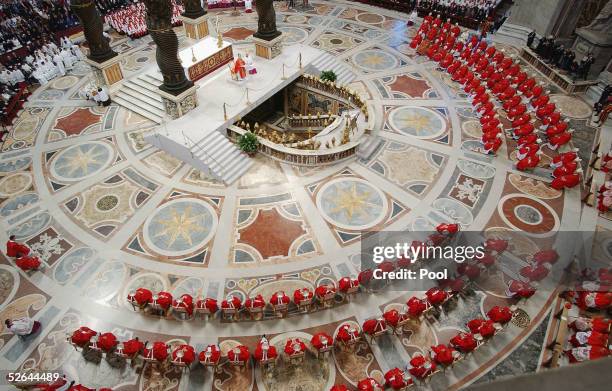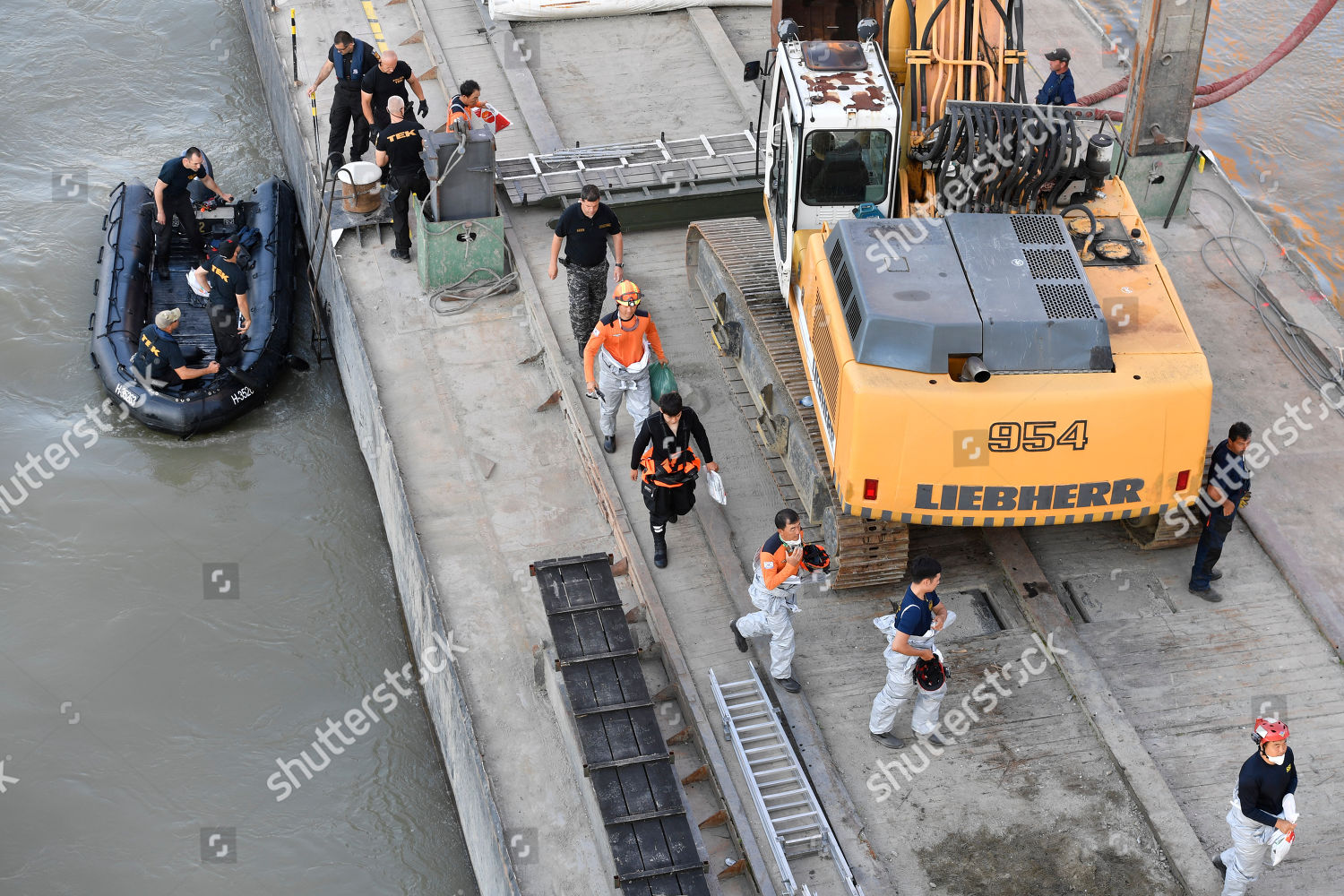Stadium Track Resurfacing For Championship Meet

Table of Contents
Assessing the Need for Stadium Track Resurfacing
Before initiating stadium track resurfacing, a thorough assessment is critical. This involves identifying existing damage and determining the optimal timing for resurfacing.
Identifying Track Degradation
Signs of track wear and tear significantly impact performance and safety. Regular inspections are vital for preventative maintenance. Look for:
- Cracking: Cracks in the surface, whether small spider-web cracks or larger fissures, compromise the track's integrity and create tripping hazards.
- Fading: Color fading indicates UV degradation, reducing the surface's lifespan and potentially affecting its performance characteristics.
- Delamination: Separation of the track's layers indicates underlying structural issues requiring immediate attention. This can lead to uneven surfaces and significant safety risks.
- Uneven Surfaces: High spots, low spots, or any deviation from a perfectly flat surface compromise running consistency and increase the risk of injuries.
Weather conditions and frequency of use heavily influence track degradation. Prolonged exposure to sunlight, freezing temperatures, and heavy rainfall accelerate wear and tear.
- Example 1: Extensive cracking may necessitate complete resurfacing rather than spot repairs.
- Example 2: Significant delamination requires a thorough investigation of the base layer before resurfacing.
Determining the Right Time for Resurfacing
Several factors influence the decision to resurface a stadium track:
- Upcoming Events: Major competitions necessitate a flawless track. Resurfacing should be scheduled well in advance to allow sufficient curing time.
- Safety Concerns: Significant track damage compromises athlete safety, mandating immediate action.
- Regulatory Requirements: Governing bodies like the IAAF have specific standards for competition tracks. Failure to meet these standards may result in disqualification.
A cost-benefit analysis compares resurfacing with temporary repairs. While repairs are cheaper initially, they often prove more expensive in the long run if they don't address the underlying issues.
- Checklist for Resurfacing:
- Visible cracking or delamination
- Uneven running surface
- Fading or discoloration
- Upcoming major competitions
- Failure to meet regulatory standards
Choosing the Right Track Surface for Your Championship Meet
Selecting the appropriate track surface is crucial for optimal performance and longevity.
Types of Track Surfaces
Several surfacing materials are available, each with its advantages and disadvantages:
- Polyurethane: A popular choice, polyurethane offers excellent durability, elasticity, and shock absorption, minimizing athlete fatigue and injury risk. Many variations exist, offering different levels of performance and cost.
- IAAF-Certified Surfaces: International competitions require IAAF certification, ensuring the track meets specific performance and safety standards. This certification guarantees consistent quality and fair competition.
The choice depends on budget, climate, and the level of competition.
- Key Features of Track Materials:
- Elasticity and shock absorption
- Durability and longevity
- UV resistance and colorfastness
- Water drainage properties
- Compliance with IAAF standards
Considering Environmental Factors
Climate significantly impacts surface selection:
-
Temperature Extremes: Materials must withstand extreme heat and cold without cracking or losing performance.
-
Rainfall: The surface must have excellent drainage to prevent waterlogging and ensure a safe running surface.
-
UV Resistance: Prolonged sun exposure causes fading and degradation; high UV resistance is crucial for longevity.
-
Factors for Different Climates:
- Arid climates require high UV resistance.
- Wet climates necessitate excellent drainage properties.
- Extreme temperature fluctuations demand materials with high elasticity and flexibility.
The Stadium Track Resurfacing Process
Professional resurfacing involves meticulous preparation, installation, and post-installation care.
Preparation and Site Survey
Before installation, existing track removal and base preparation are crucial. This includes:
-
Thorough Cleaning: Removing debris, old surfacing material, and any contaminants.
-
Base Repairs: Addressing any cracks or imperfections in the underlying base to ensure a level and stable foundation.
-
Site Survey: A detailed inspection assesses the base's condition and identifies any potential problems before proceeding.
-
Pre-Resurfacing Checks:
- Assessment of existing base structure
- Removal of old surfacing materials
- Cleaning and preparation of the base
- Leveling and repairs to the base
Installation and Curing
The installation process involves applying the new surfacing material in layers, carefully following manufacturer instructions.
-
Specialized Equipment: Specialized machinery ensures even application and optimal surface texture.
-
Skilled Labor: Experienced professionals are needed to guarantee proper installation and adhesion.
-
Curing Time: Allowing sufficient curing time under controlled environmental conditions is essential for proper adhesion and durability.
-
Stages of Installation:
- Base preparation and leveling
- Application of primer coats
- Application of surfacing layers
- Final smoothing and finishing
- Curing and inspection
Post-Installation Inspection and Maintenance
After installation, a final inspection ensures quality control and adherence to specifications.
-
Quality Control Checks: Verifying the track's evenness, texture, and compliance with regulatory standards.
-
Preventative Maintenance: Regular maintenance prolongs the track's lifespan. This includes routine cleaning, minor repairs, and periodic inspections.
-
Ongoing Maintenance:
- Regular cleaning and debris removal
- Prompt repair of minor cracks or damage
- Periodic inspections for wear and tear
Conclusion
Proper stadium track resurfacing is vital for a safe and successful championship meet. By carefully assessing the need, selecting the right material, and using professional installation, you create a high-performance track that meets elite athletes' demands. Remember, regular maintenance prolongs the track's life, maintaining its championship-caliber quality. Invest in your athletes and your championship meet's success by exploring professional stadium track resurfacing options today. Contact a reputable track contractor to discuss your specific needs and receive a quote for your stadium track resurfacing project.

Featured Posts
-
 Updated Injury Report Rays Vs Yankees Series April 17 20
May 11, 2025
Updated Injury Report Rays Vs Yankees Series April 17 20
May 11, 2025 -
 Next Papal Election Key Cardinals And Potential Papal Successors
May 11, 2025
Next Papal Election Key Cardinals And Potential Papal Successors
May 11, 2025 -
 Celtic Payton Pritchards Sixth Man Of The Year Win A Historic Moment
May 11, 2025
Celtic Payton Pritchards Sixth Man Of The Year Win A Historic Moment
May 11, 2025 -
 Salvage Operation For Sunken Superyacht Results In Diver Death
May 11, 2025
Salvage Operation For Sunken Superyacht Results In Diver Death
May 11, 2025 -
 Rare Easter Video Boris And Carrie Johnson Showcase Their Son
May 11, 2025
Rare Easter Video Boris And Carrie Johnson Showcase Their Son
May 11, 2025
